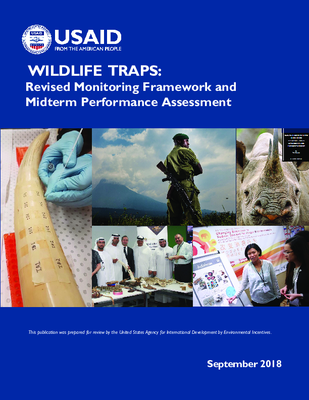Wildlife TRAPS: Revised Monitoring Framework and Midterm Performance Assessment
Wildlife Trafficking Response, Assessment, and Priority Setting (Wildlife TRAPS) was launched in 2013 and is implemented by TRAFFIC, IUCN’s strategic partnership with World Wildlife Fund (WWF). Wildlife TRAPS seeks to increase recognition by authorities and multi-sectoral stakeholders that wildlife trafficking is a global issue that requires a multicountry, multi-sectoral, and multipartner response. This midterm assessment of the project began with a review of the existing theory of change and performance management plan. Through this phase, the assessment team developed a revised project monitoring framework against which progress and performance could be assessed. The second review phase focused on answering four essential questions about the project’s enabling conditions, monitoring and evaluation, and evidence.
https://biodiversitylinks.org/projects/completed-projects/measuring-impact/resources/wildlife-traps-revised-monitoring-framework-and-midterm-performance-assessment/view
https://biodiversitylinks.org/projects/completed-projects/measuring-impact/resources/wildlife-traps-revised-monitoring-framework-and-midterm-performance-assessment/@@download/image/image.png
File
Wildlife TRAPS: Revised Monitoring Framework and Midterm Performance Assessment
Wildlife Trafficking Response, Assessment, and Priority Setting (Wildlife TRAPS) was launched in 2013 and is implemented by TRAFFIC, IUCN’s strategic partnership with World Wildlife Fund (WWF). Wildlife TRAPS seeks to increase recognition by authorities and multi-sectoral stakeholders that wildlife trafficking is a global issue that requires a multicountry, multi-sectoral, and multipartner response. This midterm assessment of the project began with a review of the existing theory of change and performance management plan. Through this phase, the assessment team developed a revised project monitoring framework against which progress and performance could be assessed. The second review phase focused on answering four essential questions about the project’s enabling conditions, monitoring and evaluation, and evidence.



